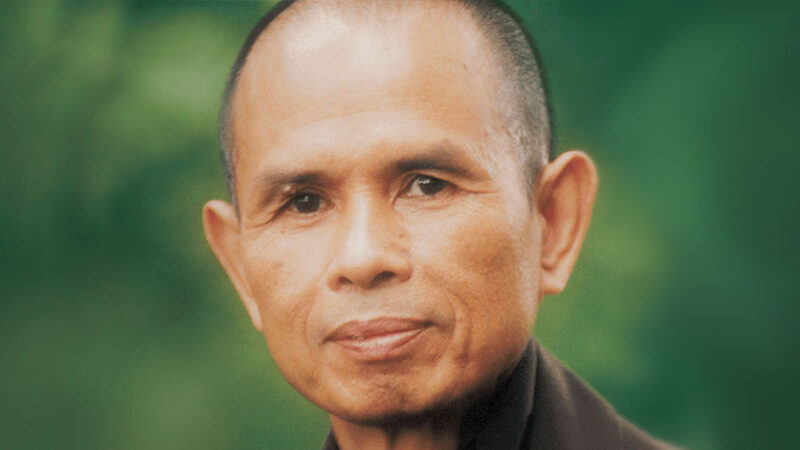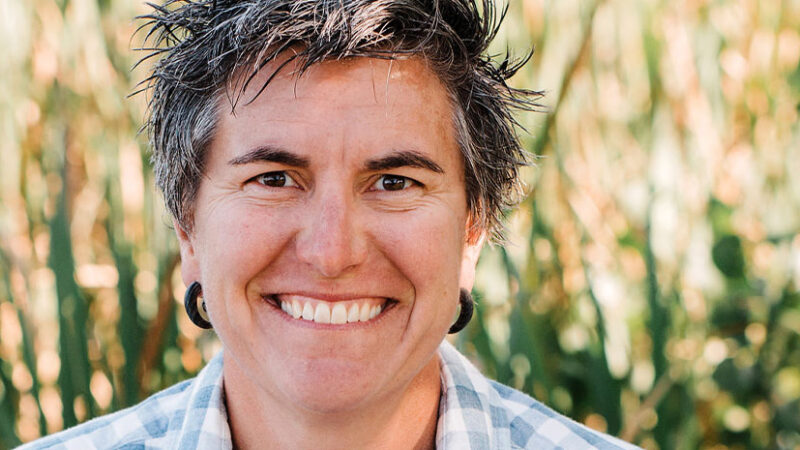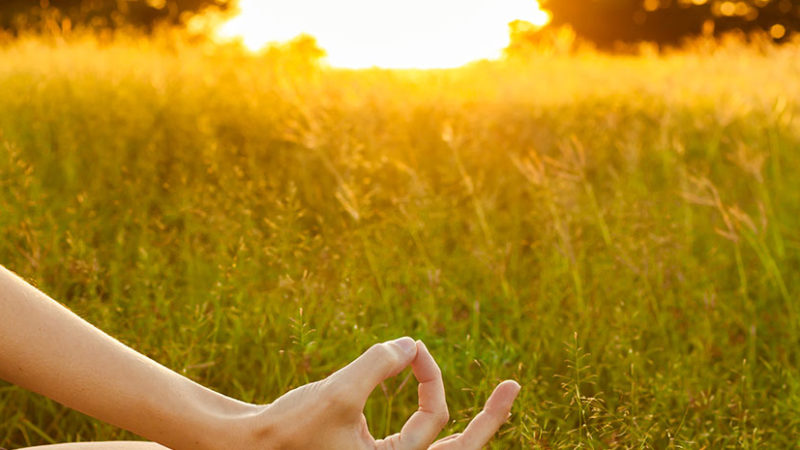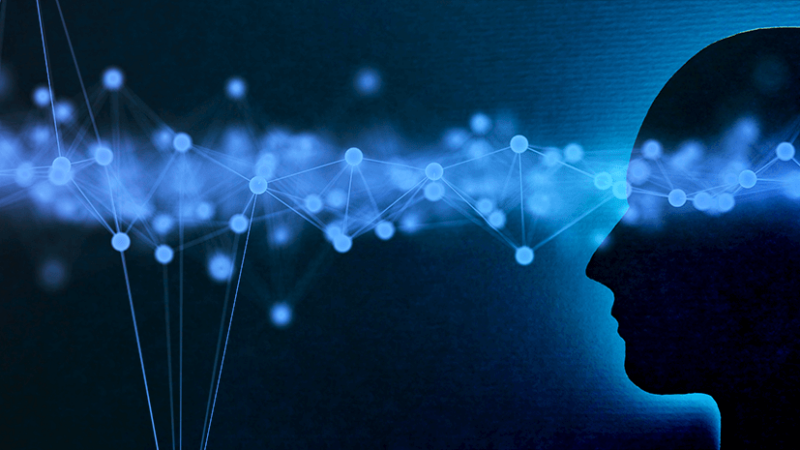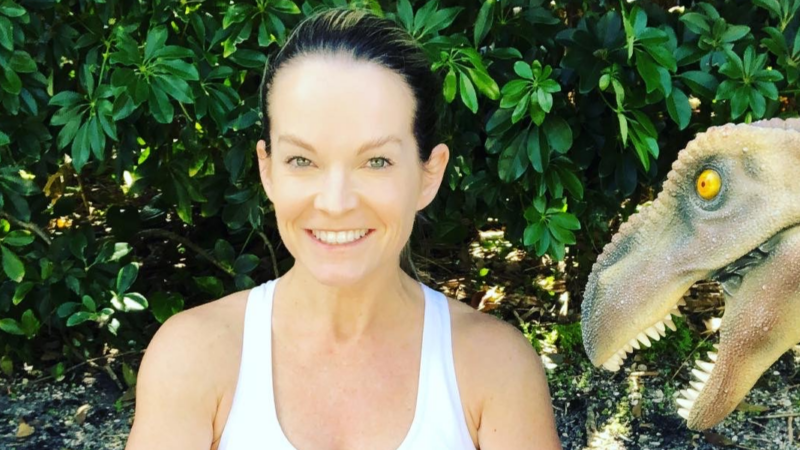-
E117: The Real Work: Letting Go from Within
Michael Singer — October 2, 2025
True spirituality isn’t about mystical experiences or lofty ideals—it’s about honestly facing...
-
Once More: Reflections on Reincarnation and the Gap Between Lives
Tami Simon — September 26, 2025
In this special reflection episode of Insights at the Edge host Tami Simon looks back on her...
-
Honey Tasting Meditation: Build Your Relationship with Sweetness
There is a saying that goes “hurt people hurt people.” I believe this to be true. We have been...
Written by:
Amy Burtaine, Michelle Cassandra Johnson
-
Many Voices, One Journey
The Sounds True Blog
Insights, reflections, and practices from Sounds True teachers, authors, staff, and more. Have a look—to find some inspiration and wisdom for uplifting your day.
Standing Together, and Stepping Up
Written By:
Tami Simon -
The Michael Singer Podcast
Your Highest Intention: Self-Realization
Michael Singer discusses intention—"perhaps the deepest thing we can talk about"—and the path to self-realization.
This Week:
E116: Doing the Best You Can: The Path to Liberation -
Many Voices, One Journey
The Sounds True Blog
Insights, reflections, and practices from Sounds True teachers, authors, staff, and more. Have a look—to find some inspiration and wisdom for uplifting your day.
Take Your Inner Child on Playdates
Written By:
Megan Sherer
600 Podcasts and Counting...
Subscribe to Insights at the Edge to hear all of Tami's interviews (transcripts available, too!), featuring Eckhart Tolle, Caroline Myss, Tara Brach, Jack Kornfield, Adyashanti, and many more.
Most Recent
Thich Nhat Hanh: Meditation Is for Everyone
Thich Nhat Hanh is a Vietnamese Zen Buddhist monk, teacher, poet, peace activist, and the author of over 100 books and numerous Sounds True learning programs, including The Art of Mindful Living and Living Without Stress or Fear. In this episode of Insights at the Edge, Tami Simon speaks with Hanh about the core of Buddhist practice: discovering liberation through present-moment mindfulness. Hanh relates some of his experiences as a young monk in Vietnam, including his involvement in the “engaged Buddhism” movement. Finally, Tami and Hanh discuss why meditation is available no matter where you are or what condition you are in. (46 minutes)
Ash Beckham: The Courage to Be an Everyday Leader
Ash Beckham is an activist and public speaker whose TEDx Talk “Coming Out of Your Closet” is one of the most viewed on the platform. With Sounds True, Ash has published Step Up: How to Live with Courage and Become an Everyday Leader. In this episode of Insights at the Edge, Ash speaks with Tami Simon on how anyone can be a positive culture worker in even the smallest moments. Ash explains why she refers to herself as an “accidental activist,” tying this into the theme of her seminal TEDx Talk—that everyone keeps parts of themselves in the closet. Tami and Ash consider how to apply the lessons of Step Up to everyday social difficulties, as well as the “eight pillars of leadership” that lead to effective, heartful communication. Finally, they discuss the value of authenticity and what it truly means to live courageously.
The Basics of Nature Mindfulness
Ursasana: Bear Posture
Many years ago, a bear sat down next to me while I was meditating in the woods. It was an afternoon in mid-October in the Berkshires, and I had been mountain biking in my favorite preserve. I took a break from riding to enjoy the perfect fall afternoon. I was overflowing with gratitude. My life was going well.
I sat under a strong oak tree and closed my eyes. I asked Spirit to come and sit with me, to share in my heartfelt thanksgiving. I spoke the words aloud and immediately heard footsteps in the woods behind me. They got closer, but I continued with my meditation, until directly behind me, I heard a twig snap and a loud exhalation through a very big nose. I knew in that moment, in every cell of my body, that a bear was behind me.
My heart pounded, and adrenaline surged through my body. I was totally alert and aware. I very slowly turned my head to look behind me and saw shining black fur from shoulder to rump, close enough to reach out and touch. It was a large black bear. Immediately my mind provided options for survival. Get up and run away? Get up and yell to scare the bear away? Climb a tree? Those ideas seemed bad. Sit still, do nothing, and breathe? Yes, that made sense. And so I did. I slowed my breathing and meditated on the intensity of my body’s response to this perceived threat.
In my yoga I had learned that strong sensations and emotions, including fear, can be powerful doorways into meditation. Rather than turning away from an uncomfortable experience, I had learned to breathe into what I was feeling. In this case, the fight-or-flight response was a huge wave washing over my mind, body, and soul. Instead of making a big story about what was happening, I remembered to face the experience in all of its raw power. I had the thought, This is the coolest thing that has ever happened to me! I had another thought, too: This might be the worst thing that has ever happened to me! Many hundreds of hours, I had practiced breathing through the intense sensations of yoga postures, watching my experience without reaction and allowing things to be the way they are. All that training on the mat was now being put to the test in a pose I had never tried before, Bear Pose, or Ursasana.
For a moment, I wondered how it might feel to be bitten by a bear. That was not a helpful thought, so I returned to my breathing. Moments seemed to stretch into hours. The bear walked out from behind the tree and sat next to me. It was smelling me. Still I remained motionless. In time, the bear walked away. I turned to look as it walked away. It turned to look back at me. Our eyes met, and then it disappeared down the hill. I stood up and fell down, my legs weak and wobbly. I stood again and got to my bike. I climbed on board and pedaled out of those woods like a bat out of hell!
For days, I was in a state of profound shock and elation. My life was filled with magic, possibility, and power. Anything could happen. I felt incredibly alive. The presence of the bear stayed with me—even to this day. I have never been a thrill seeker or adrenaline junkie. I’ve never jumped out of an airplane or tried bungee jumping. I’ve always been drawn to more meditative outdoor activities, like canoeing, archery, or watching birds. But sitting in meditation with a bear gave me an unexpected adrenaline jolt.
While sitting with a bear is not likely to happen to many people, you may encounter other life-forms or elements that can help you awaken and experience a greater degree of aliveness. We long for connection with our relatives who roam the forests and wildlands, and we still find nourishment in their company. In mindful rewilding, we open ourselves up to the sensations and life-giving experiences that the land holds for us. Such moments of communion between you and the living earth can open doorways into a more magical, mysterious, and meaningful life. And it makes all the difference to have the right mental tools and preparation to help you ride the waves of powerful energies you will encounter in both the human and the more-than-human worlds.
When sitting with that bear, I used a technique we lovingly call “BRFWA”: Breathe, Relax, Feel, Watch, and Allow. You might use BRFWA on your first walk in a park or a wood that is new to you. You might use it during your first solo camping experience or when you see an animal that frightens you. I once used BRFWA when I got caught in a rip current while swimming off the Big Island of Hawaii. It allowed me to remain calm and to act skillfully, possibly saving my life. In any survival situation, the first advice is almost always to remain calm and think, not to react or panic. But how we are supposed to do that is not often explained.
By practicing mindful rewilding, you are not looking to put yourself in a survival situation, though many of these skills can help you feel more confident and capable when you’re away from the conveniences of modern society. Inevitably, the more time we spend outdoors, the more likely we are to come up against our comfort zone or find ourselves in a situation where remaining calm and being skillful are necessary. In these moments, BRFWA can be a great ally.
I recommend that you use BRFWA regularly as a moment-to-moment practice. Using it daily will support your developing a general state of mindfulness. You can also use BRFWA to go deeper into a pleasant experience. Maybe you practice it when you take a walk or when you dip your feet in a cool stream or when you feel a fresh breeze moving through your neighborhood. Practice BRFWA regularly so that when something truly challenging happens, it is second nature for you, as it was for me when I had my encounters with the bear and the rip current.
BRFWA: Breathe, Relax, Feel, Watch, Allow
To begin working with BRFWA outdoors, try the following steps:
- Go outside. Find a place where you can sit comfortably and have a view of a natural, outdoor space. (This might also be the place where you want to establish your daily nature meditation.)
- Get grounded. Feel your sitz bones and imagine they are plugging in to the earth. As you ground down through your seat, also lengthen your spine and let it rise up through the crown of your head. Imagine that your spine is the trunk of a great tree and you are the bridge that connects the heavens and the earth.
- Breathe. Soften your belly, and slowly deepen your breathing with each inhalation and exhalation. If possible, breathe in and out through the nose. A good ratio for this breath is to inhale for four counts and hold the breath gently for seven counts; then exhale for eight counts, and repeat the cycle. As you breathe, notice the qualities of the air. What is the temperature? Is it hot, cold, or somewhere in between? How moist or dry is the air? What can you smell? Leaves, pine needles, the smoke from nearby fireplaces? In which direction is the wind moving? What can you hear? Your breath, your heartbeat, your joints settling? Branches creaking against each other, leaves rustling in the breeze, dew dripping to the ground, chipmunks or squirrels scampering, crows cawing, pigeons cooing, an airplane passing overhead?
- Relax. As you breathe, begin to consciously scan your body. Notice any places where you are holding tension. Focus on each of these places, as you continue to breathe calmly and deeply, and invite these places to soften and let go. Maybe your forehead is tense, and your brow is furrowed. Maybe your shoulders are tight and raised with tension. Perhaps your jaw is clenched. See if you can allow your jaw to relax, so that your teeth are parted. Invite your tongue to sit heavy and relaxed in your mouth, with the tip of the tongue resting against the ridge of skin behind your two front top teeth. With each exhalation, feel tension melting out of your body, mind, and spirit. Relax into the support of the earth element. Feel the earth beneath you and within your bones and muscles.
- Feel. As you continue to breathe and relax, notice what you can feel. Notice your body and what your body can feel—the air on your skin, the earth against your buttocks and legs, the light on your skin or coming through your clothing. Notice your heart and how you are feeling right now, not from a place of judgment, but from a place of compassion for yourself, and from a larger perspective, from your witness. Notice how the breath moving in and out helps you to feel more. This is one of the great secrets of yoga: the more deeply you breathe, the more of your own life you can feel.
- Watch. Be the witness. Observe your experience and allow as much space as you can for whatever is happening to be the way it is. Simply observe the land around you. Notice movement wherever it may be. Watch the play of light and the subtle movement created by the atmosphere’s constant state of motion. Watch everything, and be curious about any life you see, whether birds in the bushes or trees, ants crawling on the ground, or a squirrel leaping from limb to limb. When you come into the present moment using these steps, doors of perception will open to you. You will see the world through new eyes.
- Allow. Let it be. Let the moment be exactly the way that it is. Let go of grasping to your idea of what this moment should be. Let go of any aversion to things as they are. See if you can simply allow this moment to be as it is, and give yourself the opportunity to experience this moment right now in its pure expression. No matter the weather, no matter the terrain, can you allow this living earth and your relationship with it to be the way that it is? Moment by moment, can you keep letting go of your opinions, preferences, and judgments? It’s not easy for any of us, which is why we practice. This awareness is something to come back to moment after moment after moment, always beginning again.
- This is an excerpt from Rewilding: Meditations, Practices, and Skills for Awakening in Nature by Micah Mortali.

Customer Favorites
Healing the Trauma that You Don’t Know You Have
Most people living today are more traumatized than they know. But how could that be?
When we experience very distressing events, our nervous system goes into a state of overwhelm (or what neuroscientists call dysregulation). You may end up feeling less like yourself, unable to have a healthy range of experiences, but can’t easily connect the dots mentally or heal emotionally. It’s not your fault that this happens—it’s your nervous system’s built-in way of protecting you, and it happens outside your conscious awareness.
However, you can learn to recognize the effects of trauma. You can follow those threads through the maze of your past, to find ways of healing in the present that will improve your health mentally and emotionally.
Types of Trauma
While individuals differ in their responses, there are broad categories of trauma that we should all know exist: childhood trauma, racial trauma, sexual trauma, religious trauma, narcissistic abuse, war, pandemics and other natural disasters, and intergenerational trauma. Three of these types are briefly covered below.
Childhood Trauma
No family is perfect, but some do active harm. Too often, children suffer neglect and physical, sexual, or emotional abuse, often with no outside resources to protect them. Childhood trauma can also happen if the mother is treated violently, someone in the family has substance abuse problems or a mental illness, the parents are going through a divorce or separation, or one of the parents or a sibling dies.
In all of these situations, because a child’s nervous system is not yet fully developed, the childhood trauma often goes unidentified until something triggers a memory or compounds it, years or decades later.
Narcissistic Abuse
Many of us know someone who exhibits signs of narcissism, focusing exclusively on themselves and unable to empathize with or “make room for” others. If you’ve suffered abuse by a narcissist, whether they were a parent, partner, or boss, you may no longer trust your instincts in relationships or feel guilty about things that aren’t actually your fault or responsibility. You may feel you have to be “special” to gain recognition, and you may have developed a case of perfectionism to keep away the shame that your abuser made you feel for not living up to their impossible standard.
Global Events: Pandemic Trauma and War Trauma
The pandemic put virtually all of us into a “sustained survival mode” that evoked or caused trauma. The pandemic saw a 25 percent increase in anxiety and depression, according to the World Health Organization (WHO). As a shared trauma, it also led to widespread Post-Traumatic Stress Disorder (PTSD) and burnout among health-care workers. It affected parents who had to juggle supervising their children and working from home while schools were closed. And it deeply impacted those who experienced the loss of a loved one unexpectedly to COVID, who were often not able to say goodbye in person, weaving trauma into the fabric of their grief.
The first formally identified cases of PTSD (known as “shell-shock”) were in soldiers who served during World War I. Tragically, wars have been embedded into the human experience since recorded history. No matter whether it be the recent conflict in the Ukraine, the uprising in Iran, or ongoing conflicts elsewhere, the impact on the psyche of those living in those areas is severe. As widespread violence and threats of violence go on, month after month, traumatic stress compounds for both soldiers and civilians living in warzones. Even in areas where conflict is not directly taking place, there can be trauma impressed into those living in ongoing fear of nuclear war or attack.
How Trauma Works in the Nervous System
To understand your trauma, you’ll need to get to know your nervous system and how it responds to signals of danger, real or perceived.
Over the course of human evolution, our nervous system developed three kinds of responses to threats to help us get through dangerous experiences intact. These subsystems are known as: social engagement, sympathetic mobilization, and parasympathetic immobilization systems. They usually operate below our conscious awareness, but when someone experiences ongoing distress or a trauma that doesn’t resolve, the neurological connections behind these responses get strengthened and we become “stuck” in maladaptive patterns—through no fault of our own.
When the social engagement system responds, we look for help or someone to rescue us from the situation. If this response is encouraged, we may habitually “fawn” around others, hoping to appease anyone causing us distress. We can develop too much compassion for others, leading us to forget to care for ourselves, which over time creates more stress and trauma in our nervous system.
When the sympathetic nervous system responds, we engage in “fight, flight, or freeze,” to try to figure out what to do with the threat (freeze), then to subdue it (fight), or else escape it (flight). When this system is “stuck” in overdrive, we may have problems like depression, anxiety, or phobias.
If all other tactics fail, the parasympathetic nervous system can still put us into a collapsed, shut-down state (“faint”), as a way to survive with the least possible amount of damage when fighting or fleeing aren’t possible. This state is linked to depression and dissociation.
Symptoms of Trauma and PTSD
If you’ve sustained any form of trauma in the past, you may experience various difficulties, depending on the way the trauma got stuck in your system:
- Anxiety or Panic Attacks
- Denial
- Feeling emotionally numb or hopeless
- Hypervigilance
- Difficulty connecting with others
- Overwhelming shame or guilt
- Aggressive behavior
- Self-destructive behavior
- Addictions
- Insomnia and dysregulated sleep
- Flashbacks
Another way to determine whether you’ve dealt with trauma is to think about how you show up in a relationship. Do you enjoy some of your interactions with others, or do you often feel inner pressure around everyone you meet? Do you feel nurtured by one or more people in your life, or do you feel responsible to everyone, all the time? Do you feel uncertain around your loved ones, like you’re not really sure you can rely on them?
When we’ve experienced trauma in a past relationship, be it with a neglectful parent, an erratic partner, or an abusive boss, our nervous system tracks the impact, and it affects our present relationships—until we shed light on what’s happened and learn how to work through its effects on us.
Treatments for Trauma
In the last few decades, neurobiology has blossomed and cross-pollinated with psychology. New discoveries have been made, new theories have been tested, and thankfully, a range of therapies and treatments for trauma have been developed to help us cultivate deep self-regulation. Among them are somatic therapies such as Somatic Experiencing and sensorimotor psychotherapy, trauma-focused Cognitive Behavioral Therapy and Cognitive Processing Therapy, Eye Movement Desensitization and Reprocessing (EMDR) and “brainspotting,” and trauma-informed psychodynamic therapy.
Therapy is a wonderful option, but if you’ve been through individual therapy or want additional support, there are other ways to learn skills to work through trauma.
By committing to your own healing, you’ll not only create greater balance in your life, you will stop trauma from being passed on to the next generation—and you’ll bring a healing presence into the world.
If you’d like support in your commitment to healing trauma, you can check out The Healing Trauma Program, hosted by Jeffrey Rutstein, PsyD, CHT.
Meet the Author of Dinos Don’t Do Yoga
The Author
Catherine Bailey is the author of multiple picture books, including Harbor Bound and Mind Your Monsters. For more, please visit catherinebaileybooks.com.
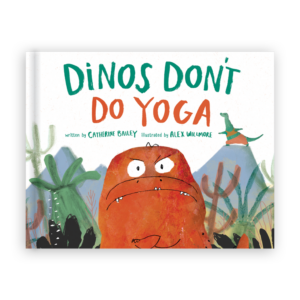 The Book
The Book
Rex is a dinosaur with a rough, tough crew. But when a yoga-loving dinosaur comes to town, Rex and his fierce friends discover there’s more to strength than big muscles and bad attitudes. This fun-filled story features timely themes about kindness, friendship, and being able to see past our differences.
Has your book taken on a new meaning in the world’s current circumstances? Is there anything you would have included in your book if you were writing it now?
Dinos Don’t Do Yoga was written back during the calm and quiet of 2018. At the time, it was simply a funny story about a grumpy T. rex. Today we are living in a very different world. Things have changed dramatically in terms of how people interact with each other—from social distancing to increased activism.
So now when I read Dinos Don’t Do Yoga, the relationships between the characters are more meaningful. I hope my readers see kindness, acceptance, and connection (in addition to a funny story!). I also hope that the book inspires children to explore yoga as a physical means of dealing with the stress of these crazy times. Yoga is a beautiful way to get back to a happy mental space.
After all, if dinos can do it—so can we!
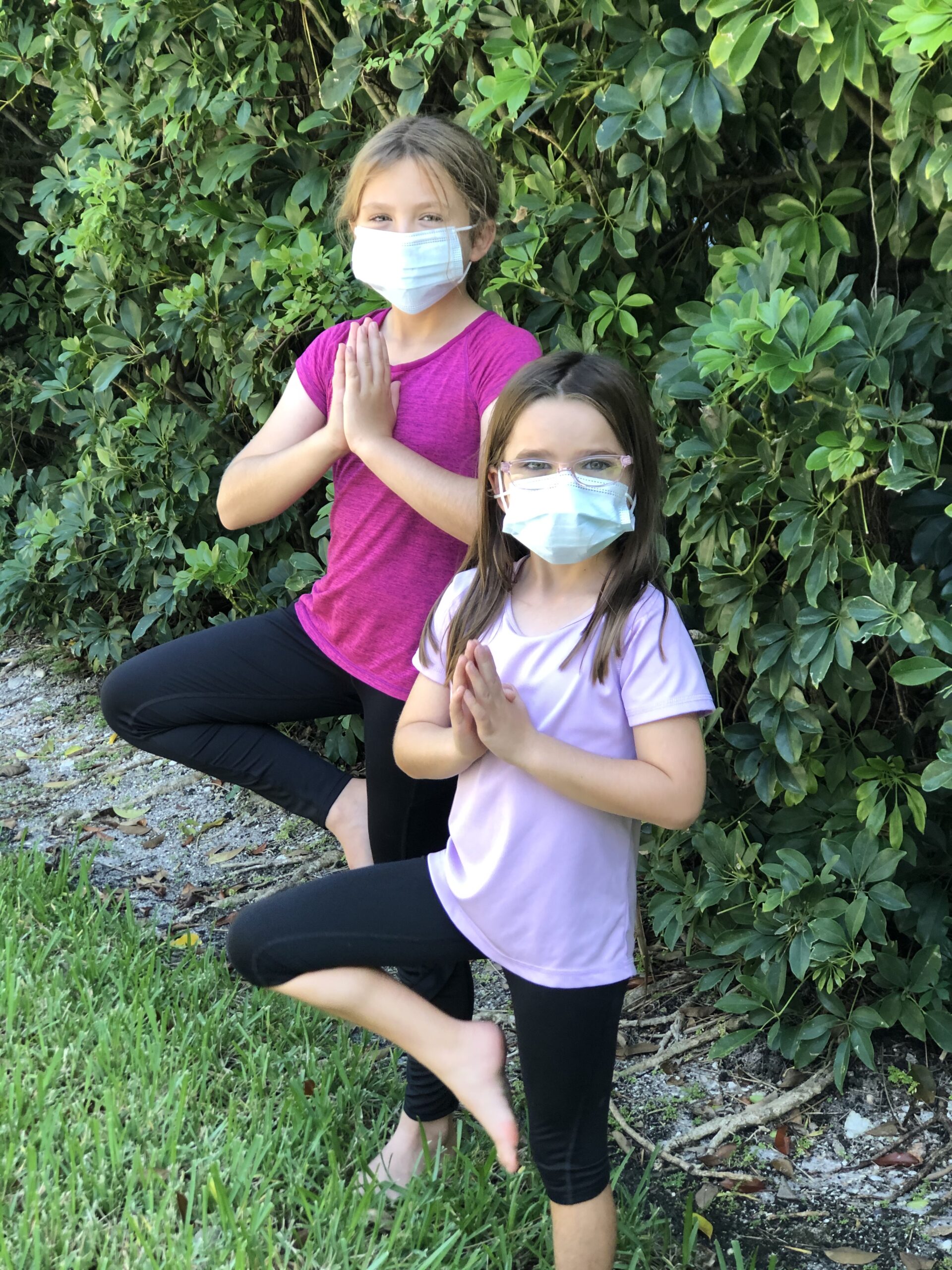
Send us a photo of you and your pet, and let us know if your pet had any role in helping you write your book!
Here we have a snapshot of the world’s most annoyed cat. I decided to share this particular picture because it reminded me of the Dinos Don’t Do Yoga cover. The illustrator of the book, Alex Willmore, brilliantly contrasted the highly disgruntled Rex (complete with eye twitch!) with his blithely happy costar, Sam. I laugh every time I see that artwork!
The same is true for this photograph of myself and our family cat, Chloe. This picture was taken right after her first (and probably last) bath. In my defense, I only bathed her because she had a small flea problem. She still has not forgiven me.
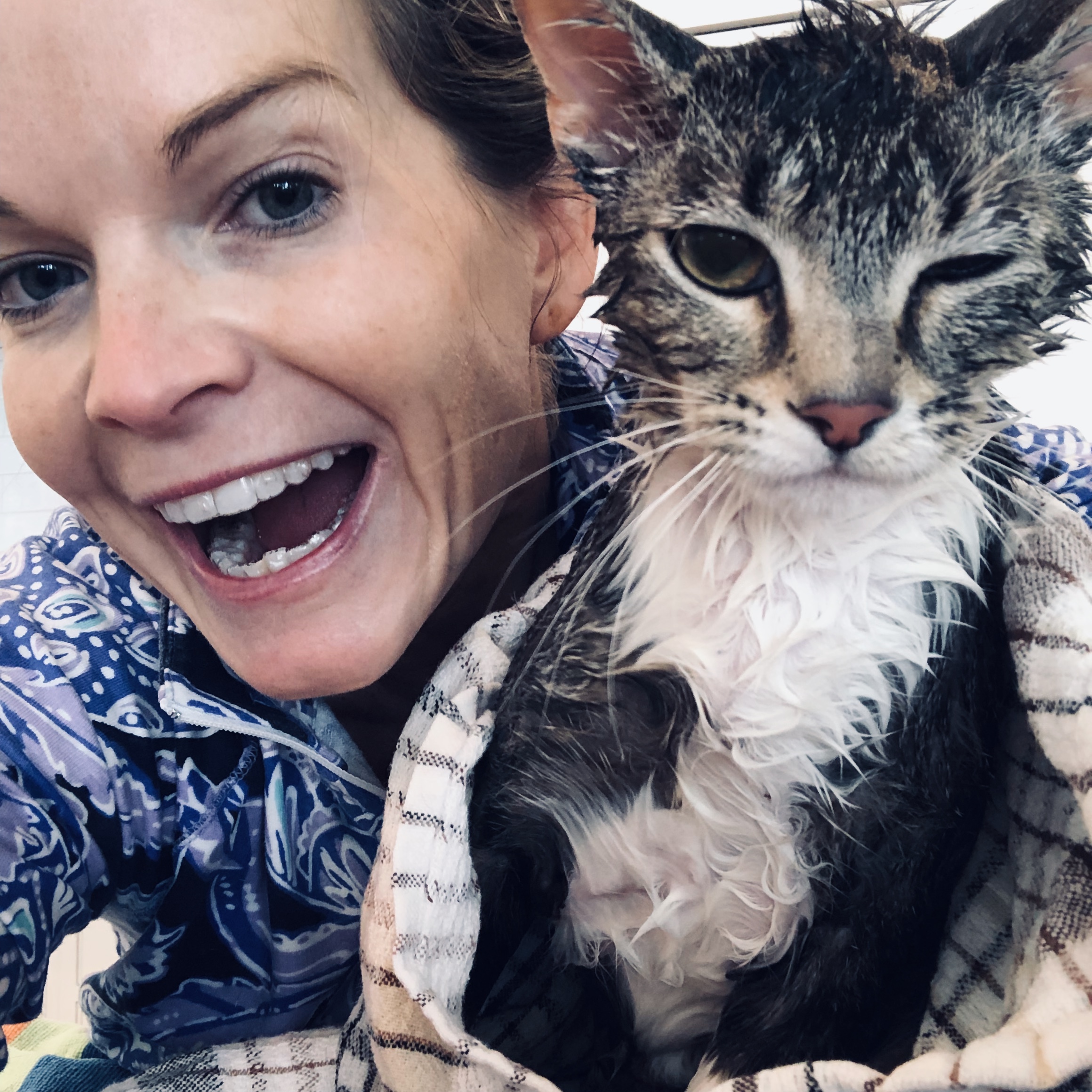
What is something about you that doesn’t make it into your author bio?

My author biography contains all sorts of fun tidbits, but it doesn’t mention this one cool thing about me: I am kid-sized! By which I mean I’m very short for my age. You cannot tell from (most) pictures, but even though I am an official middle-aged grown-up, I am only 4’8” tall. That is about the size of the average second grader!
So why do I mention it? What’s so great about being super small? Well, a lot of things! But best of all is that it makes me empathetic and mindful of other people’s differences. And that makes me a better writer. For example, it was easy for me to create the characters of Rex (challenged by his petite arms) and Sam (a true “outsider”) in Dinos Don’t Do Yoga. It is true what they say—great things come in small packages.

Learn More
Sounds True | Amazon | Barnes & Noble | IndieBound | Bookshop
Meditation and Kundalini Awakening, Part One
Tami Simon speaks with Sally Kempton, a meditation teacher who has immersed herself in the world of meditation for over four decades and has earned a reputation as a highly experienced, gifted, and insightful meditation teacher. Sounds True will be releasing Sally Kempton’s new book Meditation for the Love of It, and the audio program Beginning Meditation. In part one of this two-part episode, Sally discusses her understanding of the grace-based tradition in which she teaches, the tradition of Kashmir Shaivism, and the role of the guru. (48 minutes)

